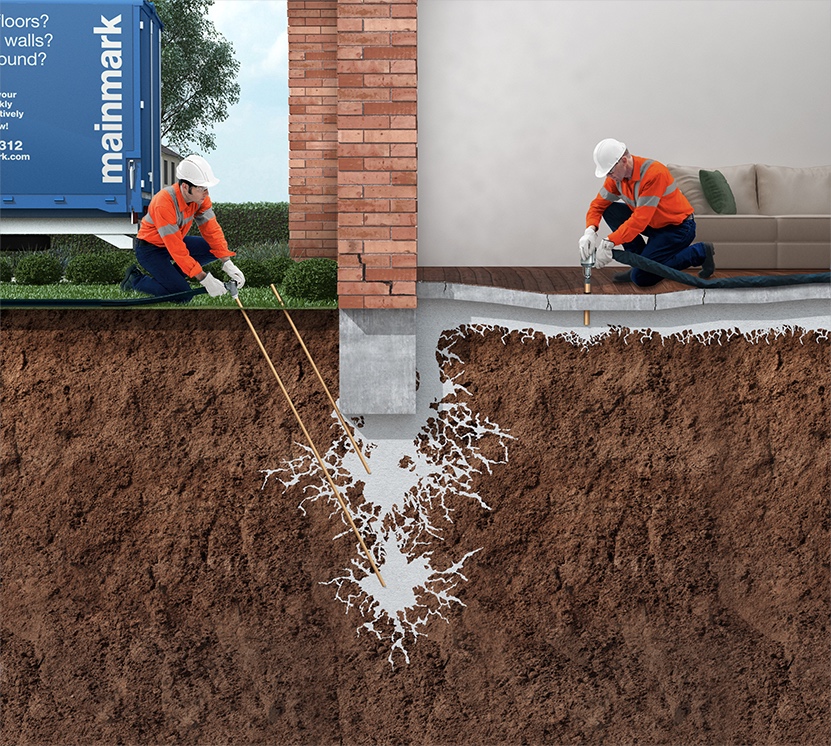The Advantages and Disadvantages of Slab Foundations
Slab foundations consist of concrete pads poured directly on the ground. While they work best in warmer climates where the ground doesn’t freeze during wintertime, slab foundations may eventually crack and shift with time, becoming susceptible to cracking and shifting as time progresses.
Slab foundation houses don’t allow termites or other pests access, making them less expensive and more low maintenance than their basement and crawl space counterparts. Furthermore, slab foundation houses require less frequent repairs.
Cost
Slab foundations tend to cost less than basements when digging is too deep or you want a home without crawl space.
Installing plumbing and electrical is often less expensive, since these systems run through the slab rather than being drilled into walls and beams. However, any plumber working on site must coordinate closely with a concrete company to ensure any necessary heated floor lines are installed efficiently – an additional task which could slow the construction process down significantly.
Price for a slab foundation depends on its size and local construction costs, with labor being the costliest aspect of such projects according to Homewyse. In particular, concrete work requires skilled workers requiring time for pouring and curing which adds further costs; additionally many homeowners include wire mesh or steel rebar in their concrete as an add-on strength measure.
Moisture and Drainage
Slab foundations can become vulnerable to moisture and drainage problems. Poor soil drainage around a slab can cause shifting and cracking in its walls as water pools in nearby soil, becoming saturated and creating an ideal breeding ground for mildew and mold growth.
Water pipes in homes, particularly those carrying hot water, expand and contract due to temperature variations. When they come into contact with concrete slabs they can lead to leakage if not correctly wrapped before installation; for this reason many builders use a subslab drainage pad and polyethylene vapor barrier before pouring concrete.
Soil around a slab foundation must be graded to prevent excess water accumulation underneath, otherwise this can put undue pressure on foundation walls, leading to structural instability and necessitating foundation repair services. Moisture can seep in through cracks in slab walls into interior spaces and cause further damage that requires professional foundation repair services.
Accessibility
Slab foundations do not feature crawl spaces underneath them, meaning there is no space to run gas and water lines through. Instead, these must be embedded into the concrete, making repair more expensive and taking more time. Breaking into a slab foundation may require special tools which increase costs and delays required to perform necessary repairs.
One major disadvantage of slabs is that they may become subject to moisture changes in the soil and changes to ground’s water table level, leading to issues. It is vital that these issues are monitored closely and any necessary improvements made for a sustainable foundation.
Slab foundations do not allow for storage or protection of heating and cooling systems that must be built directly onto the floor, as well as being incapable of being raised to accommodate changes in interior height of buildings, making them less suitable for older homes or families with children; however, they provide safer and more cost-effective accessibility needs solutions for homes with accessibility needs.
T-Shaped Slabs
Slab foundations can be an ideal solution for homes in warmer climates; however, they’re susceptible to moisture damage that leads to cracking over time. T-shaped or frost protected slabs offer protection from this hazard.
An T-shaped slab begins with a footing that extends deeper than the surrounding soil for added strength and stability. Once excavation is complete, crushed gravel layers are installed beneath the concrete slab as reinforcement; rods may then be attached as necessary for additional reinforcement purposes and reduce chances of movement or shifting of soil beneath the slab.
A rigid polystyrene foundation is ideal for colder climates, as its use provides insulation against frost heave. Unfortunately, however, this requires plumbing and gas lines to be embedded within concrete – which may prove challenging should they ever need repair as breaking through would increase both costs and lengthen repair times.

